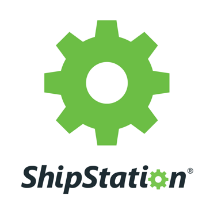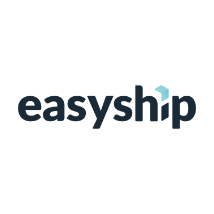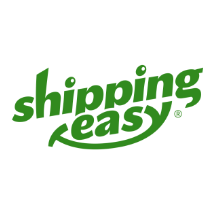Choosing a Shipping Software
The shipping software you select to help you run your business is crucial in saving time and making your process more efficient. They integrate with your website and help prevent errors like mislabeled packages, using too large of boxes or forgetting an order item. They also provide helpful overviews of where your products are in the shipping process at any given time, allow label printing, customer communications, tracking syncing and other automations between your customer, software and website that keep things flowing smoothly.
For smaller businesses with low shipping volume, your ecommerce store’s or stamps.com’s simple label printing solution should be sufficient. However, if you are working with drop shippers, shipping larger volumes, have complicated packaging sizes/materials or a tedious fulfillment process, you may benefit from a third-party shipping software – some of which even offer third-party logistics.
Shipstation
Shipstation is the ultimate hub for managing inventory, orders, drop shipper communication, fulfillment and customizing automations for your ecommerce store. This platform integrates with all major carriers, offering even deeper discounted rates and is compatible with nearly all ecommerce platforms as well.
Ranging from $9 – $159/mo, Shipstation’s pricing is based on the number of anticipated shipments, number of users and level of system support. All tiers include branded labels and packaging slips and email and community forum support. Unfortunately, live chat support is tied to payment plan level.
Shippo
Shippo is best suited for businesses seeking a multi-carrier option for their ecommerce store. It integrates with USPS, FedEx, UPS and DHL but also has dozens of regional, national and international shipping partners with discounted rates for each. Their Base Plan is free of charge but limited in features, offering only label printing with default carriers and live chat support. Their Professional Plan, with pricing based on printing label needs, has the added value of branded customer experience, automations and multiple account user slots. For a more custom account approach, you can build your own plan to meet your specific needs with their Premier Plan.
Shippo Partners with 3PL’s like ShipBob, ShipHero and ShipDaddy to offer fulfilment and logistics through their site as well.
Stamps.com
If you’re seeking a low-key and simple approach for printing order labels and providing customer tracking for USPS and UPS orders, Stamps.com may be the fit for you. Their single-user plan starts at $17.99 with integrations available with the majority of ecommerce platforms, including BigCommerce, WooCommerce and Shopify.
EasyShip
EasyShip is designed for businesses looking to ship internationally. With shipping capabilities in 220+ countries, they help you to calculate tax and duty, provide the proper documentation and help you manage your sales funnel at the same time. With plans ranging from free to custom, EasyShip offers endless features for their customers.
Ordoro
Best for large businesses, Ordoro helps its users manage inventory, dropship suppliers and returns as well as provides shipping labels, tracking, automations and analytics. Like most shipping software, it integrates with all major shipping carriers and ties into ecommerce platforms such as Shopify, BigCommerce, 3dcart, Magento and more. The priciest software of the bunch, plans range from $59 – $999/mo.
ShippingEasy
ShippingEasy offers discounted rates, allows you to print order labels and configures automations for improving your workflow and customer experience. Their platform integrates with all the major ecommerce platforms, carriers and merchants – including QuickBook sync functionality. Plans range from $5 – $159/mo.
Have a Plan to Deliver
At first glance, shipping doesn’t seem too complicated: The product moves from storage to consumer. Most businesses get caught up in how they’ll sell a product before they even consider shipping. But what do they do once it sells and there’s no plan in place to deliver?
In reality, ecommerce shipping is a complex system of many players, integrations, steps and considerations. You have to understand your product, needs and logistics before you can even make the big decisions – from familiarizing yourself with ecommerce platforms’ innate shipping features to choosing a trusted carrier and software.
We put together this guide to help you through an element of ecommerce that many forget about until they’re suddenly scrambling to determine a good shipping strategy. We did it because cost-effective, timely deliveries are critical to the customer experience, and a good experience is vital to nurturing loyalty, return visits and success.
If you’re wondering how to improve your customer experience, in shipping or any other area of your online business, we’re here and ready to help. Just reach out.






